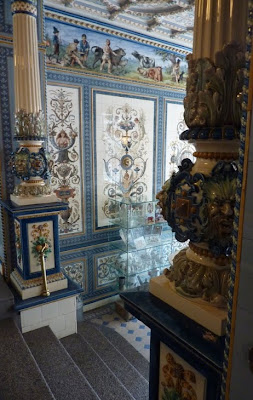We had planned on a day in Swiss Saxony, an area where the Elbe has carved a canyon of unusual sandstone formations, table mountains, a rock-climbing center. But the recent rains, flooding, road closures, and on and on, changed our plans, so we drove straight on (sort of), through a bit of the Czech Republic, then back into Germany, then into Poland, and across a good bit of southern Poland, one vast fertile but very flat plain, all the way to Auschwitz. Driving 3 or 4 hours across this plain, mostly farms, fields, and forests, I was struck by the lack of natural impediments, all the way to the Vistula, and how easy it has been, for millenia, for armies to march or roll across Poland.
 |
Weird formations in Swiss Saxony; and a climber on the right side of the left-most column |
 |
There he/she is |
 |
The Elbe, still in flood, below Bad Schandau |

















































